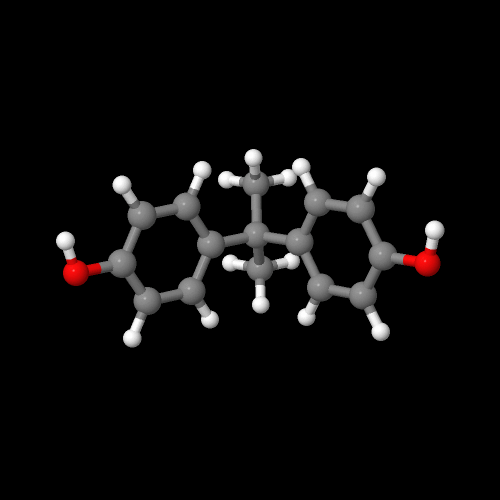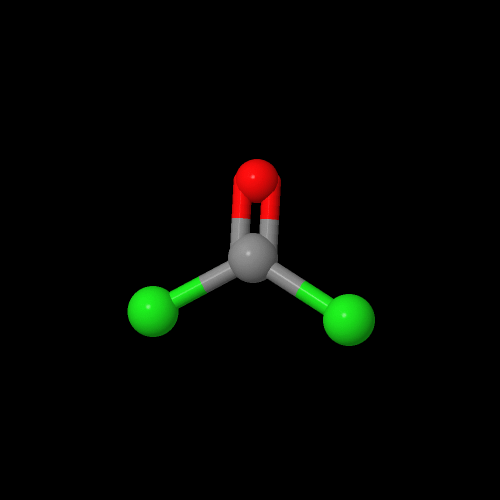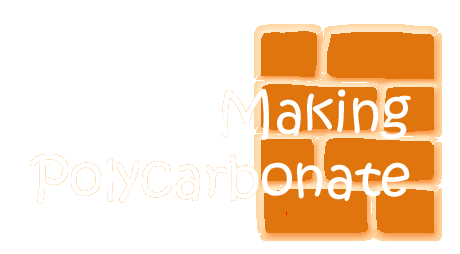 |
We're going to make polycarbonates on this page. Before we do that, let's take a look at our cast of characters. Our two leading molecules are bisphenol A, and phosgene. You can see them below in the regular way we draw molecules or see them in 3-D further below.

The model on the left below is an image of the BPA pdb model you can view by clicking here or you can just click on the image itself. The second image is of the diacid chloride monomer phosgene. Either way, be sure to close the new windows that open up with the 3D model in it when you are ready to come back here.
We're only going to worry about the bisphenol A right now. We'll get to the phosgene later. The first step in making a polycarbonate is treating the bisphenol A with NaOH. The hydroxyl group is going to do what bases do, and swipe a proton away from the bisphenol A. When this happens the hydroxyl group becomes a water molecule, and the bisphenol A, an alcohol, will find itself in the form of its sodium salt. Then the same reaction happens again on the other alcohol group of bisphenol A.
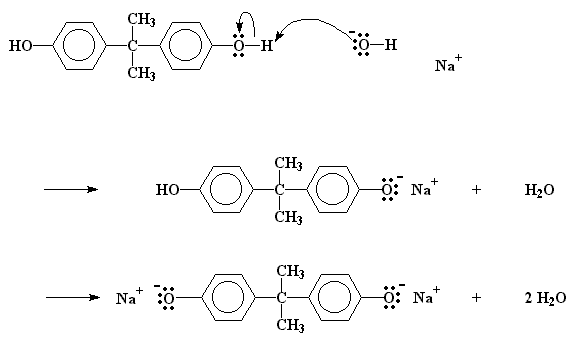
Click here to see a movie of this step of the reaction.
Now that the bisphenol A is a salt, it can go to work on the phosgene. (Remember phosgene?) You see that oxygen in the bisphenol A salt now has a negative charge on it. This means it can donate a pair of electrons to the carbon atom in the phosgene. Remember, that carbon is lacking electron density because it's next to that electronegative oxygen. When that carbon gets a new pair of electrons from the bisphenol A salt, it lets go of one of the pairs it had been sharing unequally with the carbonyl oxygen. This pair rests itself on that oxygen giving it a negative charge.
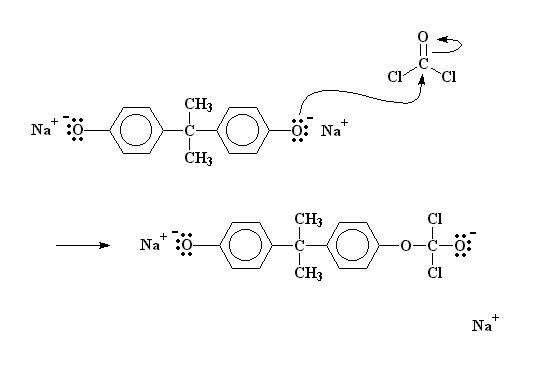
But don't assume it would like to stay this way. Far from it. The electrons on that oxygen will shift back down to the carbon, reforming the carbon-oxygen double bond. Of course, we know that the carbon can't share ten electrons, so it has to get rid of two. The two electrons to get the boot are the pair the carbon has been sharing with one of the chlorine atoms. So the chlorine and its electrons get kicked out of the molecule. The molecule we're left with is called a chloroformate. As for the chloride ion that got kicked out, it will team up with that sodium ion that's been hanging around quietly during all the commotion, to form NaCl.
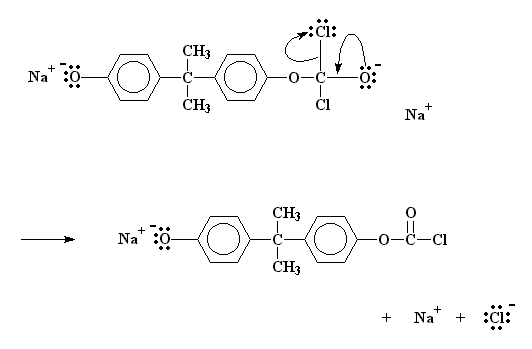
Click here to see a movie of this step of the reaction.
This chloroformate can get attacked by another molecule of the bisphenol A just as phosgene was. A second molecule of bisphenol A can attack just as the first did.
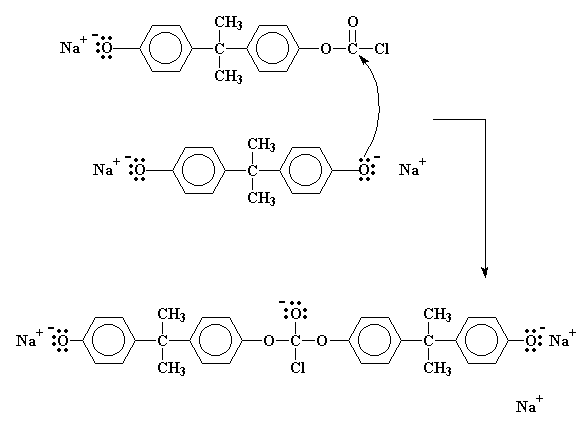
And it goes through a similar intermediate, and a similar game of electron musical chairs, to get the carbonate containing species shown.
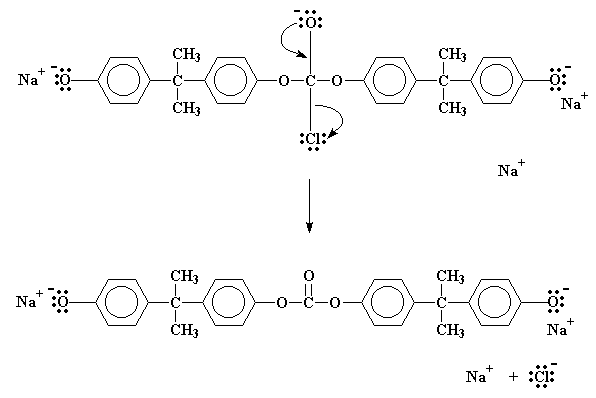
Click here to see a movie of this step of the reaction.
After this happens, the salt groups on the big new molecule can form react with more phosgene, and in this way, the molecule grows, until we get the polycarbonate.

If you want to see a movie of the whole process, click here.
Making Polycarbonate In The Lab...
Now for some more fun: actually making polycarbonate yourself. Problem is, it's kinda dangerous which means it should only be done in a hood with good ventilation and supervised by an experienced synthetic scientist.
And I can just hear you saying, "What do you mean by 'dangerous'?? Could I actually get hurt?"
Here's the scoop: the reagent that makes the synthesis go is called "phosgene," a deceptively simple and innocuous sounding name, right? WRONG!! In fact, phosgene is what's called a "war gas," so toxic that when it was used in World War I during the so-called "trench warfare" in Europe, it killed hundreds, maybe thousands of soldiers. And it didn't just didn't just do it the "wham, bang, you're dead!" way. No, phosgene has the delightful property shared by all carboxylic acid chlorides: it hydrolyzes in water to give off HCl, one of the strongest acids known. So when phosgene is breathed in after it settles into your bunker or trench (it's heavier than air), it converts to concentrated HCl in your lungs. That doesn't kill you outright. Instead, it slowly eats away your lung tissue, causing your body to flood your lungs with water which in turns causes you to drown even though you're not under water. Horrible way to go. So safety first here: enough said?
Still Want to Give It a Try?
If you still want to try this and promise to be extremely careful, click here to view the procedure and here to download a copy.
And you need to KNOW you've actually made the polymer, right? Best way is to get an NMR spectrum or two of your isolated product. Go here to view a 1H spectrum and and here to see the 13C spectrum.
Now the good news is that there's an alternative, much safer way of making polycarbonate that doesn't involve phosgene. We talk about that more in a later section, so stayed tuned...

|
Return to Polycarbonates Page |

|
Return to Level Four Directory |

|
Return to Macrogalleria Directory |
